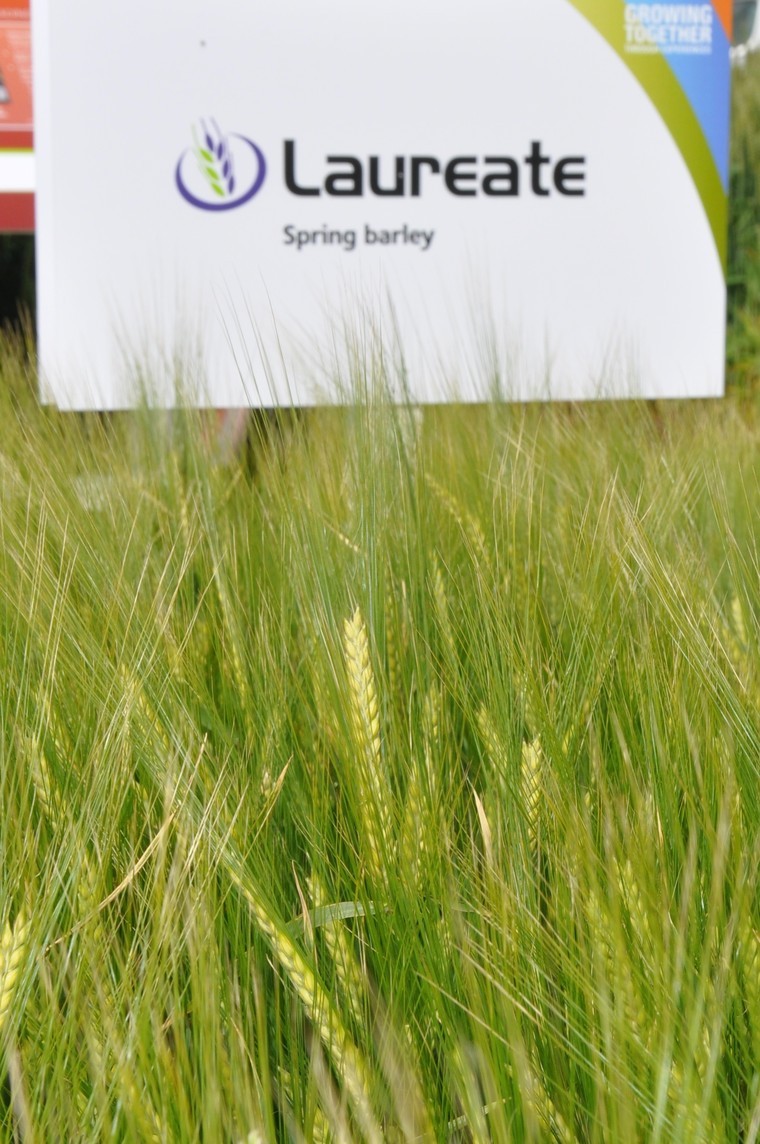Spring barley offers a much more competitive option than spring wheat for reducing black-grass numbers when planted at like-for-like seed rates.
Moreover, carefully considering cultivation techniques prior to planting spring barley could slash black-grass seed return by more than 4,000 seeds/m2.
Those are key findings to emerge from Syngenta trials as growers consider spring cropping options after the difficult autumn.
According to Syngenta field technical manager, Georgina Wood, trials in Oxfordshire and Cambridgeshire showed that increasing seed rates of both spring barley and spring wheat gave progressive reductions in the number of black-grass ears per m2.
However, at every seed rate tested – of 87, 175, 350 and 525 seeds/m2 – the average number of black-grass ears/m2 was substantially lower in the spring barley, she adds.
In the case of the popular spring malting barley varieties, Laureate and Propino, drilled at a standard 350 seeds/m2, black-grass ear numbers were a massive 94% lower than in the spring wheat drilled at the same seed rate. The same herbicide treatments were used across both crops.
“Subsequent work on Laureate at our heavy land Innovation Centre at Barton, Cambridgeshire, also confirmed spring barley to be about a third better at reducing black-grass than spring wheat,” continues Georgina. “This was in a direct drilling situation.
“Other work at the Barton site comparing cultivation methods showed that ploughing, rather than direct drilling, before planting spring barley further reduced black-grass ear numbers from 84 to just 1/m2, which was a reduction of 98%. Based on each black-grass ear producing 50 seeds, that’s a potential for around 4,000 fewer black-grass seeds being shed per m2 and returned to the seed bank.
“Clearly this was one site in one year. Cultivation methods need to be matched to individual situations and will depend on the conditions. If there’s a risk of bringing more buried black-grass seed back to the surface then ploughing may not be the best option.
“If growers are forced to plant more spring cereals this season because winter cereal drilling was impossible due to weather conditions, it’s not only important to choose the most competitive species of spring cereal, but also the correct cultivation method to minimise the number of weeds germinating and to exert the most pressure on the emerged weeds,” she adds.
With the majority of black-grass germinating in autumn, Georgina says a huge advantage of spring cropping is the opportunity for stale seedbeds. While later drilling or a move to spring cropping may not have been by choice this season, better black-grass control will be a real benefit, she points out.
Another advantage of spring crops is that black-grass germinating within the crop has less time to tiller, she notes, which means fewer ears and potentially less seed return.
“Although it can be challenging in some years, taking time to achieve a good seedbed will have significant benefits. Good soil conditions produce even crop emergence for more competitive and higher yielding crops, whilst also aiding weed control – because cloddy seedbeds can shelter emerging black-grass from herbicide sprays.
“If you are growing spring malting barley, check what contracts are available. Propino may be most suited to export opportunities, while Laureate has full approval for both malt distilling and brewing uses for harvest 2020 on the MBC Approved List.”




